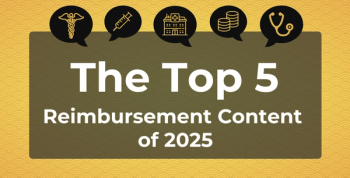
Sutimlimab Shows Efficacy in Patients With CAD Without Recent Transfusion
Investigators said the benefits appeared relatively early in treatment for many patients and persisted throughout the study period.
New clinical trial data suggest a first-in-class humanized immunoglobulin G4 monoclonal antibody is well tolerated and effective in patients with
The results of the CADENZA trial, a randomized controlled phase 3 study of sutimlimab (Enjaymo), were
The study authors explained that CAD is a rare autoimmune hemolytic anemia in which patients experience chronic hemolysis. The therapy is mediated entirely by the classical complement pathway, the investigators said.
“Patients with CAD may experience complement-mediated symptoms, including chronic hemolysis resulting in anemia, profound fatigue, and jaundice,” they wrote. “Non–complement-mediated symptoms include transient, cold-induced agglutination-mediated circulatory symptoms such as acrocyanosis and Raynaud’s phenomenon.”
In February, sutimlimab became the first CAD therapy approved by the Food and Drug Administration. According to drugmaker Sanofi, the therapy works by selectively targeting and inhibiting C1s in the classical complement pathway, thereby inhibiting the activation of a “complement cascade” and ultimately stopping C1-activated hemolysis, preventing the destruction of healthy red blood cells.
In the CARDINAL trial, which was the basis for the therapy’s approval for CAD, the drug showed efficacy in patients with a recent history of blood transfusions. In the new CADENZA study, the investigators wanted to understand how safe and effective the drug would be in patients with CAD who did not have a recent transfusion.
The investigators enrolled 42 patients in the study, each of whom had hemoglobin of less than or equal to 10 g/dL, elevated bilirubin, and at least 1 symptom of CAD. Twenty-two patients were given sutimlimab on days 0 and 7, then biweekly. The remaining 20 enrollees were given placebo. The primary end point was a composite end point that included hemoglobin increase of at least 1.5 g/dL, avoidance of transfusions starting at week 5 and continuing through the 26th and final week of the study, and avoidance of study-prohibited medications from weeks 5 to 26.
About three-quarters of patients in the sutimlimab group (16 patients; 73%) met the composite end point compared with just 3 patients (15%) in the placebo group (odds ratio, 15.9; 95% CI, 2.9-88.0; P < .001).
The authors reported that the intervention led to normalization of hemoglobin and hemolysis markers in most patients, along with a notable decrease in fatigue. “Response to sutimlimab was rapid (within 1-3 weeks) and sustained over 26 weeks,” they said.
On average, hemoglobin levels were maintained at at least 11 g/dL from the third week onward for patients in the treatment group. Likewise, bilirubin was normalized within 1 to 3 weeks for most patients and sustained throughout the rest of the study.
“Conversely, placebo had no significant effect on these end points,” the authors said, adding that improvements in patients taking the therapy correlated with “near-complete” inhibition of the classical complement pathway.
In terms of safety, all but one patient experienced at least 1 treatment-emergent adverse event, the most common of which were headache, hypertension, Raynaud’s phenomenon, and acrocyanosis. However, the investigators said just 8 patients in the treatment group and 4 in the placebo group were considered to be associated with the treatment or placebo administration. Three patients taking sutimlimab discontinued due to adverse events, but none in the placebo group did so.
“These data demonstrate that sutimlimab has potential to be an important advancement in the treatment of CAD,” the investigators concluded.
Reference
Röth A, Berentsen S, Barcellini W, et al. Sutimlimab in patients with cold agglutinin disease: Results of the randomized placebo-controlled phase 3 CADENZA trial. Blood. Published online June 10, 2022. doi:10.1182/blood.2021014955
Newsletter
Stay ahead of policy, cost, and value—subscribe to AJMC for expert insights at the intersection of clinical care and health economics.








